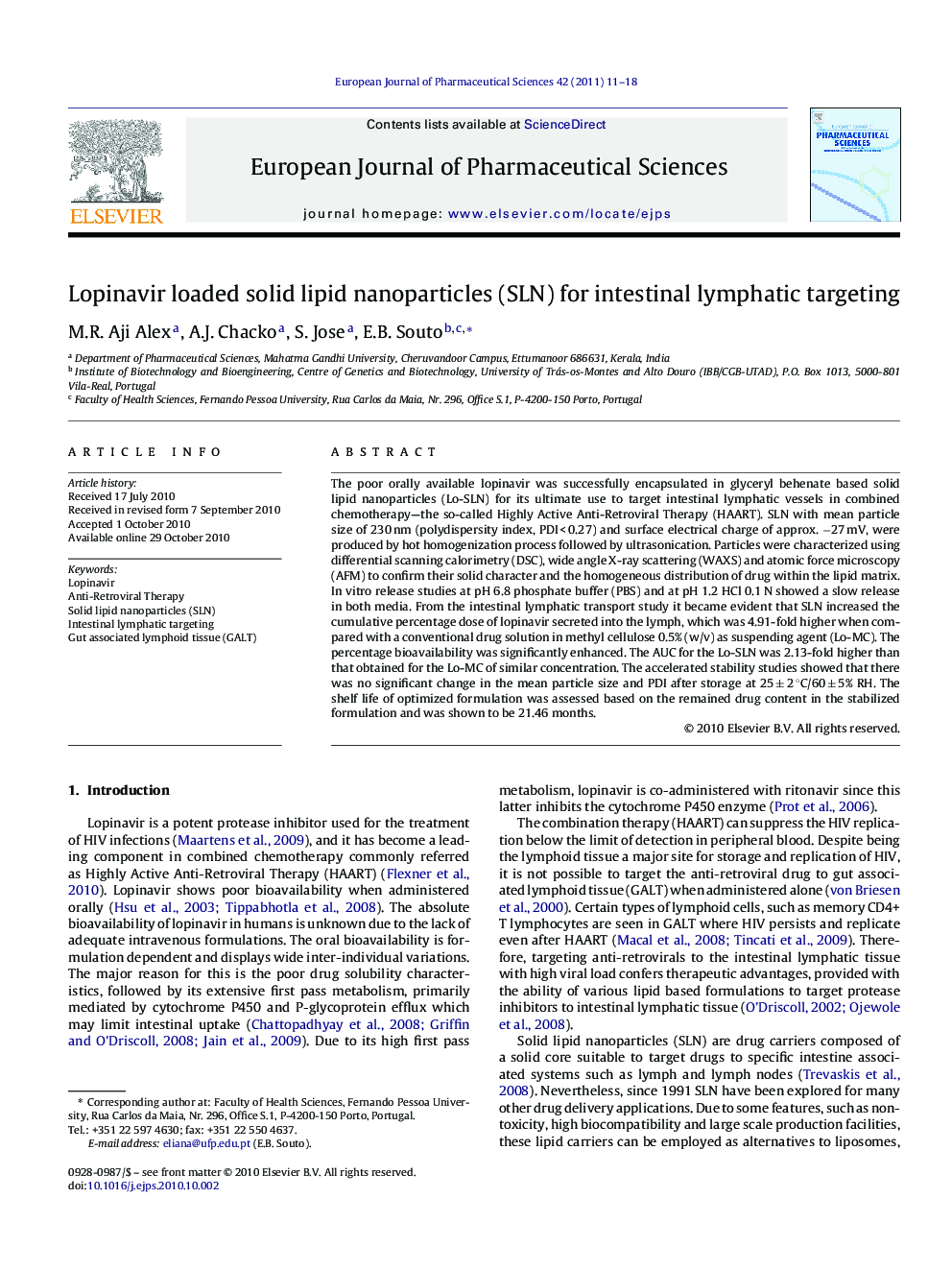| Article ID | Journal | Published Year | Pages | File Type |
|---|---|---|---|---|
| 2481189 | European Journal of Pharmaceutical Sciences | 2011 | 8 Pages |
The poor orally available lopinavir was successfully encapsulated in glyceryl behenate based solid lipid nanoparticles (Lo-SLN) for its ultimate use to target intestinal lymphatic vessels in combined chemotherapy—the so-called Highly Active Anti-Retroviral Therapy (HAART). SLN with mean particle size of 230 nm (polydispersity index, PDI < 0.27) and surface electrical charge of approx. −27 mV, were produced by hot homogenization process followed by ultrasonication. Particles were characterized using differential scanning calorimetry (DSC), wide angle X-ray scattering (WAXS) and atomic force microscopy (AFM) to confirm their solid character and the homogeneous distribution of drug within the lipid matrix. In vitro release studies at pH 6.8 phosphate buffer (PBS) and at pH 1.2 HCl 0.1 N showed a slow release in both media. From the intestinal lymphatic transport study it became evident that SLN increased the cumulative percentage dose of lopinavir secreted into the lymph, which was 4.91-fold higher when compared with a conventional drug solution in methyl cellulose 0.5% (w/v) as suspending agent (Lo-MC). The percentage bioavailability was significantly enhanced. The AUC for the Lo-SLN was 2.13-fold higher than that obtained for the Lo-MC of similar concentration. The accelerated stability studies showed that there was no significant change in the mean particle size and PDI after storage at 25 ± 2 °C/60 ± 5% RH. The shelf life of optimized formulation was assessed based on the remained drug content in the stabilized formulation and was shown to be 21.46 months.
